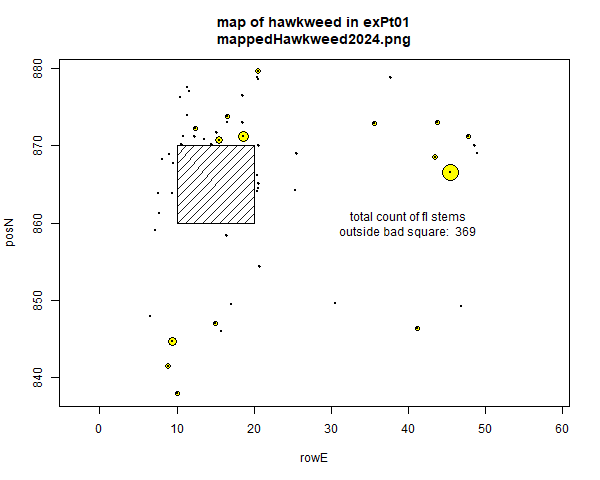We have a patch of an invasive weed in our main experimental plot. We have been trying to keep this non-native hawkweed from spreading for several years. This year we did a really good job. First, we found all the satellite patches and used the opportunity to practice reading and making maps. Then we pulled all the flowers stems–we estimated 369 stems. Here’s a map of all hawkweed patches and the main infestations is the 10m x 10m square.

Then we pulled all the stems in the square of infestation, counting as we pulled. Here are the counts & the total in the square:
sum(172, 120, 165, 108, 142, 103, 128, 121, 206)
[1] 1265
After we counted and pulled, we each made an independent estimate of the number of flowering stems we missed. We could have missed stems that were trampled or difficult to see with the current light conditions. Here are our counts with the mean and median:
mean(37, 30, 25, 40, 120, 20, 40, 48, 32)
[1] 37
median(37, 30, 25, 40, 120, 20, 40, 48, 32)
[1] 37
Stuart went back when it was cloudy and found 47 stems in the infestation square, mostly trampled. The next day he systematically walked the square and found 4 more. So that’s 51 missed. One person had a pretty close estimate (48). All but one of our estimates were optimistic about our thoroughness.
round(c(37,51)/(1265+51), 3)
[1] 0.028 0.039
We estimated a miss rate of 3% and our actual rate was closer to 4%. We practiced estimating, pulled a lot of stems, ~1700, and have maps to go back and get the plants later this season. Good work, team!

Leave a Reply